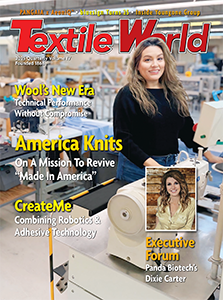BADINIERES, France — February 19, 2018 — Porcher Industries will assemble a talented team of textile, composite and chemical engineering experts in Paris to present its latest innovations at JEC World 2018, March 6-8.
Porcher Industries’ five business units will present new market specific technical textile and thermoplastic composite solutions at Stand M28 in Hall 6.
NEW Porcher Industries Dry Fiber
As the composites market pursues automated processes for high-rate production, Porcher Industries’ Dry Fiber offer a new way of processing materials Out-of-Autoclave (OOA).
Porcher Industries Dry Fiber is a versatile range of carbon fiber functionalized with a binder interface. Optimised for AFP-made preforms for thermoset resin infusion or injection, Dry Fiber provides similar component properties to conventional prepreg stacking, enabling the high speed production of complex shaped parts with outstanding buy-to-fly ratio.
The technology uses a cost-effective one-step-process to impregnate the fiber. As a result, Dry Fiber can be produced in flat calibrated width for AFP or rounder non-calibrated formats for winding, with a variety of different fiber aerial weights, binder chemistries and binder rates available on request.
Other features include: 100-percent continuous fiber with no splices that boasts excellent steering in high curvature AFP lay ups; no need for paper or film interleaves meaning less waste and risk of fuzzing ; good epoxy resin compatibility and a long shelf life.
Sustainable Greenlite fabrics with vibration dampening characteristics
Porcher Sports, an innovator of lighter, safer and more durable reinforcements for sporting equipment, will showcase its GREENLITE® range of fabrics.
Previously recognized with the renowned JEC Composites Innovation Award, Greenlite fabrics use low density cellulose fibres to produce a range of reinforcements that are biodegradable, highly compatible with bio-resins and suitable for large volume manufacturing of bio-based composite sporting goods such as ski’s, snowboards, rackets and bike frames. As well as their contribution to sustainability, Greenlite composites exhibit exceptional vibration dampening characteristics, improving comfort and reducing fatigue in all performance sport applications.
Enhanced Thermoplastics for Automotive
Porcher Industries will be showing its full range of technical textile composite solutions for the automotive sector from woven fabrics, to PiPreg thermoplastic prepreg materials and pre-consolidated cured laminates. Furthermore, we will be showcasing an enhanced Thermoplastic portfolio with the newly introduced PolyPreg, a co-mingled glass & polypropylene fabric. These solutions offered are available for the most demanding applications in vehicle manufacturing.
Following on with the success stories from other textile solutions and with the technology synergies with aerospace composites, Porcher is aiming to use its strength, knowledge and experience to drive further development of innovative composite solutions for the automotive industry.
High Performance reinforcements and new non-combustible FLAMLINE glass fabrics for Construction
The Porcher Industries building team will showcase a comprehensive range of Glass, Carbon and Glass/Carbon hybrids including unidirectional carbon fabrics, plain Weaves, and Carbon/Glass Hybrids for the construction market. These high performance reinforcements are used in applications such as the strengthening and repair of concrete columns, beams and floors.
In addition, Porcher Industries has now added a non-combustible line of FLAMLINE glass fabrics to their Building Business Unit. Flamline fabrics are used when the highest levels of fire, smoke and toxicity protection are required in textile applications such as acoustical insulation panels, stage curtains, and upholstery interliners for furniture.
The Porcher Industries Building team will also showcase textile solutions for thermal, acoustical, and solar protection across the construction market.
High-Performance Carbon/PEEK for Industrial Applications
Alongside the full range of technical textiles offered, Thermoplastic Composite materials also provide an almost limitless set of solutions within the Industrial sector. One possibility is the replacement of metallic parts, offering excellent chemical resistance without any additional surface treatment or coating. Porcher Industries Industrial will showcase long lasting high-performance Carbon/PEEK parts used in specialist pumps from the chemical production industry.
Posted February 16, 2018
Source: Porcher Industries




